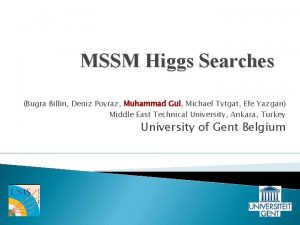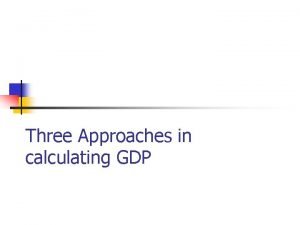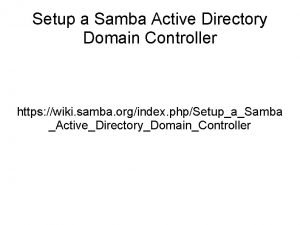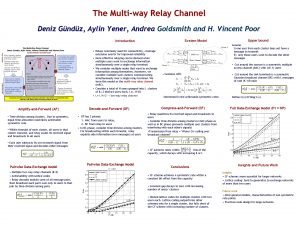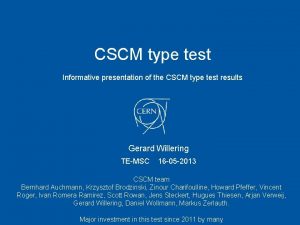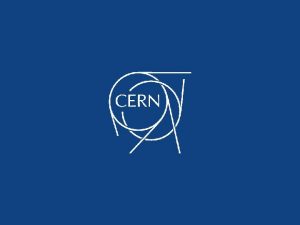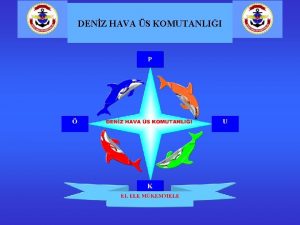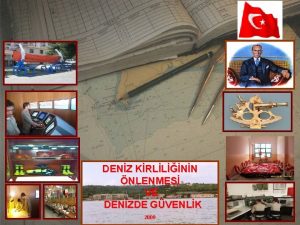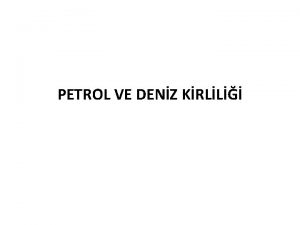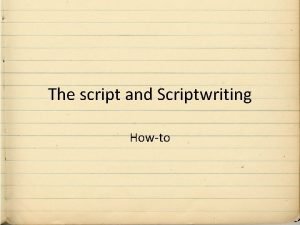CSCM Howto R Denz TEMPEEP RD 19 June2014








- Slides: 8

CSCM How-to R. Denz, TE-MPE-EP, RD, 19 -June-2014 “A how-to is an informal, often short, description of how to accomplish a specific task. A how-to is usually meant to help non-experts, may leave out details that are only important to experts, and may also be greatly simplified from an overall discussion of the topic. ” (from WIKIPEDIA) 1

CSCM basics – the QPS hardware part è The latest CSCM version uses the same hardware platform as the standard n. QPS – This solution provides the same or better safety level for the circuits as during the type test in 2013 but is fully compatible with the n. QPS (reduced recommissioning time, no hardware change) – There a variety of different protection systems involved: • m. DQQBS type board for the bus-bar segments (CSCM configuration) • DQQDS type board for the diode by-passes (CSCM configuration) • DQQDC type board for the HTS current leads (standard operation) • DQQLC type quench loop controllers (linking to PIC) TE-MPE-EP, RD, 19 -June-2014 • DQQDB type global circuit protection (disabled during CSCM) • EE systems (bypassed during CSCM) è The configuration of the m. DQQBS and DQQDS boards can be changed remotely by QPS specialists – Interventions required for DQQDB and EE systems 2

Switching from n. QPS to CSCM è To switch from n. QPS to CSCM the configuration parameters for each of the concerned protection systems need to be changed – DQQDS boards: threshold and filter settings – m. DQQBS boards: amplifier gains, threshold and filter settings – The operation can be performed by QPS specialists only using the advanced MACRO tools featured with the latest version of the QPS_EXPERT application (author B. Dupuy BE-OP) • Tools are RBAC protected and restricted to EP staff – Same functionality can be used to change thresholds during CSCM operation TE-MPE-EP, RD, 19 -June-2014 • The respective MACRO functions will be provided and training to CSCM operators given – Once in CSCM mode the QPS_OK signal for the corresponding circuit is FALSE during normal operation beam injection and start of power converters is inhibited 3

Switching from CSCM to n. QPS è To switch from CSCM to n. QPS the configuration parameters stored in the device FLASH memories will be erased, thus forcing to reboot in default configuration, i. e. n. QPS mode è Measures to prevent accidental switching between the two modes – QPS & LHC controls • LSA validation prior to injection; only the n. QPS configuration will be stored in LSA no LHC operation with CSCM settings – m. DQQBS firmware TE-MPE-EP, RD, 19 -June-2014 • Mode stored in program memory cross-checked with the value stored in flash during each cycle; automatic reset in case of inconsistency • PGA settings (=amplifier gains) are refreshed regularly (transparent for operation) • Both measures should prevent an accidental change of state, e. g. provoked by a radiation induced effect 4

CSCM and QPS Individual System Test (QPS-IST) è The new CSCM concept allows integrating the tests required for the CSCM preparation smoothly into the standard QPS-IST è Prior to CSCM: – Functional test of n. QPS crates in QPS labs • CSCM mode will be added to standard test sequence – n. QPS cabling verification (continuity and layout) • Local injection of test signals + checked with QPS supervision • Mandatory for n. QPS and CSCM – Interlock tests TE-MPE-EP, RD, 19 -June-2014 è After CSCM: – Verification of quench heater trigger signals (local by signal injection) • Could be eventually combined with cabling verification – Download of n. QPS compensation coefficients – Interlock tests to be completed, i. e. all protection devices to be tested – Quench heater circuit validation (already part of powering) 5

CSCM and QPS supervision è The new CSCM has to work with the default QPS supervision – No impact on circuit protection but data rates and PM buffer sizes are optimized for n. QPS operation • No time to develop a dedicated CSCM version • n. QPS supervision has been changed significantly during LS 1 – Two basic operational modes LOGGING and PM • LOGGING has two data rates: slow (m. DQQBS max. ~2 Hz; to be confirmed) and fast (DQQDS 10 Hz) TE-MPE-EP, RD, 19 -June-2014 • Each PM event produces 3 files/circuit: m. DQQBS data (max 2. 5 Hz, 100, +100 samples (200) A/B interleaved in one file, and PM DQQDS 6410 Hz -512, +1536 samples (2048), one file per board – Thresholds can be set remotely; it is possible but tedious to change settings for each board individually 6

CSCM operation è The upcoming test in 6 -7 will serve as type test; once completed management will decide on the remaining sectors – Procedures and concepts will be validated during the type test – CSCM operators (≠ EP staff!) will be trained – EP specialists (‘ if any left …”) will be present during the type test and strongly support CSCM operation • Debugging, trouble shooting, training … TE-MPE-EP, RD, 19 -June-2014 • There are however no resources to provide the same support level for then standard tests (if approved) 166879 7

CSCM timeline è 04/06/2014: scary discussion on CSCMlite @ Evian workshop è 05/06/2014: after some brainstorming and tests development of new CSCM concept è 06/06/2014: new concept presented during CSCM meeting è 10/06/2014: presented to TE-TM type test in 6 -7 and production of additional circuit boards to equip 8 sectors accepted è 10/06/2014: One CSCM expert breaks his foot … st CSCM slot – extension might be necessary! Very tight presented schedule for è 12/06/2014: to 1 LMC è 16/06/2014: type testing of hybrid firmware completed TE-MPE-EP, RD, 19 -June-2014 è 17/06/2014: after the flood … è 18/06/2014: PM data for n. QPS correctly generated è 19/06/2014: type test for cabling verification in sector 8 -1 è 20/06/2014: first installation of n. QPS crates in 6 -7 è 27/06/2014: installation & cabling tests completed; interlock loop closed è 30/06/2014: interlock tests to be completed; connection to PIC è 01/07/2014: CSCM test could start 8
